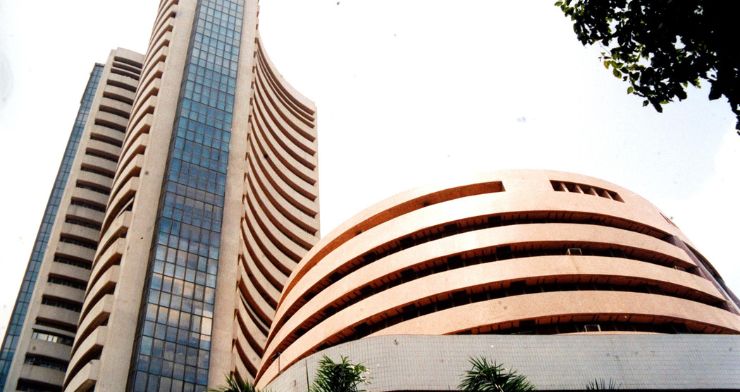Introduction to Sensex
“Oh no!! The Sensex is down today.” Agree or not we all have heard this statement once in a while from someone or the other. But have you ever wondered what Sensex is?
Sensex is a market index of BSE, which stands for Stock Exchange Sensitivity Index. It is one of the oldest market indices in India. Sensex comprises the top 30 companies on the Bombay Stock Exchange (BSE). People often term it as BSE 30.
Sensex is the oldest stock index reflecting the Indian stock market, operating since 1986 by Standard and Poor’s (S&P).

What is Sensex?
As stated earlier, Sensex is the index of the Bombay Stock Exchange.
But what exactly do you mean by an Index in the stock market?
An index is nothing but a tool to determine market trends. The index acts as a representative of the position of the stock market.
By just looking at an index, you can tell whether the market is on an upward trend or a downward trend.
The stocks are chosen from various sectors and industries and not just one sector.
So, Sensex is nothing but a tool to monitor the trends on BSE. Sensex is calculated by averaging the prices of 30 stocks out of 5000+ stocks listed on the exchange.
Sensex represents the biggest and most prominent sectors of the Indian economy, and it is India’s most tracked index.
It helps the investors to analyze the stock and market performance and thus helps them to make better investment decisions.
How often is Sensex reviewed?
It’s practically impossible to analyze and review stock daily, and thus, Sensex is reviewed every six months, that is, in June and December. Sensex is calculated in Indian Rupees (INR) and US Dollars.
To be a part of the Sensex, companies need to fulfil the following terms:-
• The company must be listed under the Bombay Stock Exchange of India
• The stocks should be relatively liquid
• The company must primarily consist of large-to-mega-cap stocks
• The company must be generating revenues from core activities
• The company needs to keep the sector balanced with the Indian equity market
List of 30 companies listed in BSE Sensex
| Sr No | Name of the Company | Weightage |
| 1 | HDFC Bank | 13.13 |
| 2 | RIL | 12.31 |
| 3 | ICICI Bank | 8.83 |
| 4 | Infosys | 7.42 |
| 5 | TCS | 5.27 |
| 6 | L&T | 4.84 |
| 7 | ITC | 4.58 |
| 8 | Axis Bank | 3.63 |
| 9 | Bharti Airtel | 3.53 |
| 10 | SBI | 3.46 |
| 11 | Kotak Mahindra Bank | 3.19 |
| 12 | HUL | 2.69 |
| 13 | Bajaj Finance | 2.3 |
| 14 | HCL Tech | 2.15 |
| 15 | Sun Pharma | 2.06 |
| 16 | NTPC | 1.92 |
| 17 | Titan Co | 1.86 |
| 18 | Maruti Suzuki India | 1.84 |
| 19 | M&M | 1.84 |
| 20 | Asian Paints | 1.66 |
| 21 | Power Grid | 1.55 |
| 22 | Tata Steel | 1.44 |
| 23 | UltraTech Cement | 1.43 |
| 24 | IndusInd Bank | 1.22 |
| 25 | Nestle India | 1.09 |
| 26 | Tech Mahindra | 1.02 |
| 27 | JSWSTEEL | 0.96 |
| 28 | JSWSTEEL | 0.96 |
| 29 | Bajaj Finserv | 0.94 |
| 30 | Wipro | 0.86 |
How is Sensex calculated?
When Sensex was launched, the calculation was made using the weighted market capitalization method.
However, after 1st September 2003, the Sensex value is calculated using the Free float market capitalization method. With the help of these calculations, the performance of thirty companies is reflected.
The formula used to calculate Sensex is
Sensex value = (Free float market capitalization/ Base market capitalization) * Base Period Index value
Woh! A lot of complex terminologies, right?
Don’t worry, you don’t have to calculate this yourself every time. Just a simple Google Search will help you get the current value.
Conclusion
To summarise, BSE Sensex is an eminent tool to analyze the performance of the Stock market in India. It not only helps the investor to understand their investing game but also provides an overview of the stock market trends. BSE 30, as it is also called, provides a list of the most actively traded stocks of prominent companies in India. BSE Sensex is acknowledged as the benchmark to evaluate the stock market performance.
FAQs
1. What is Sensex?
– Sensex is the market index of BSE which consists of the top 30 well-performing stocks of the stock market.
2. Is Sensex different from Nifty?
– Sensex comprises 30 well-performing companies in the stock market, whereas nifty comprises 50 top-performing companies.
The base value of Sensex is 100, whereas the base value of Nifty is 1000.
3. How has Sensex performed?
– Sensex has only increased in the last decade, from 18000 to 60000 levels. As per recent data calculations of 8th November 2023, the 5-year annualized Sensex return is 13.02%, whereas the 10-year annualized Sensex return is 12.14%.
4. When was Sensex launched?
– Sensex was launched in 1986.
5. What is the objective of Sensex?
– There are three major objectives for Sensex:-
- To analyze the market movements.
- To set benchmarks for stock market performances.
- To get index-based derivatives products.